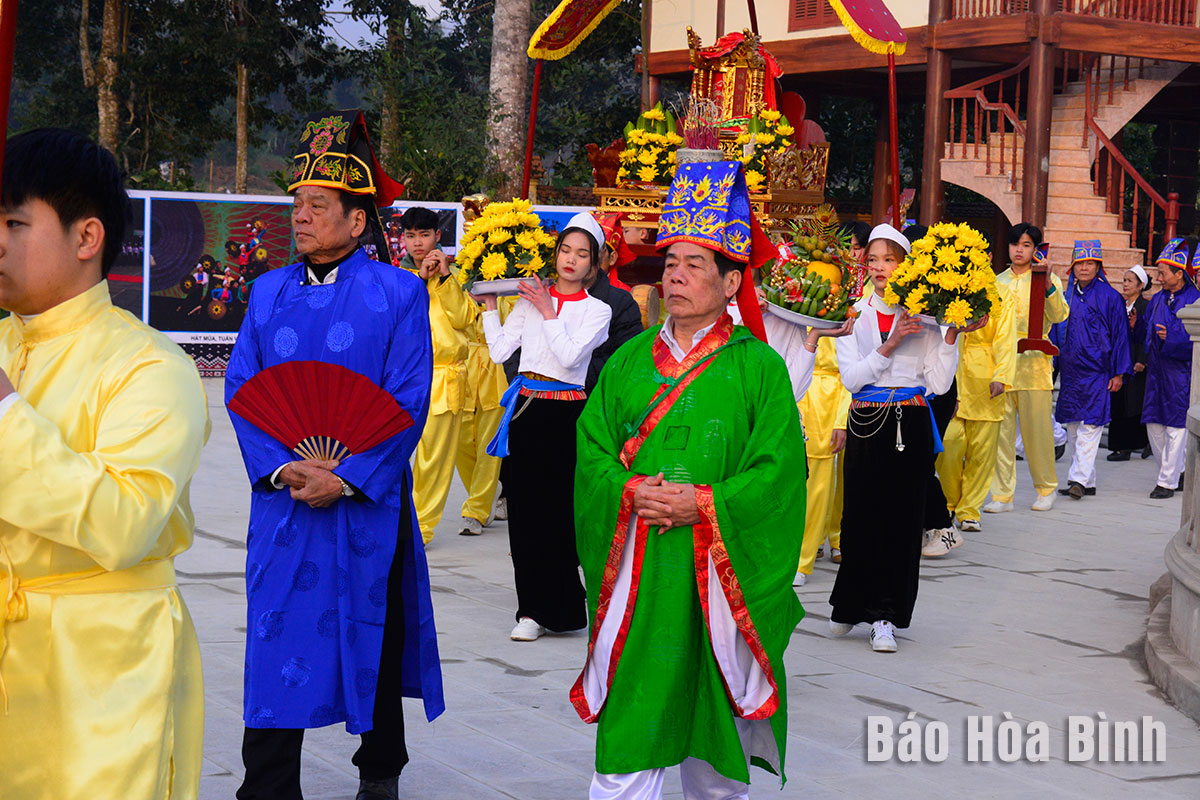
The Muong people account for over 63% of the population in Hoa Binh province. Over the time, the ethnic group has innovated and preserved its rich and diverse folk culture. Within this cultural background, there is a prominent, unique, and deeply humanistic art form known as Mo Muong.
To preserve and
promote the cultural heritage of Mo Muong, Hoa Binh province, in coordination
with other localities, is compiling a national dossier for the art to be
included in the UNESCO List of Intangible Cultural Heritage in Need of Urgent
Safeguarding.
Mo practitioners perform rituals at the Khai ha (going down to the
field) festival of the Muong people in 2023.
Bui Van Rum, a Mo practitioner from Rom Co hamlet, Thuong Coc commune,
Lac Son district, talks about Khot, tools used in Mo Muong performance.
Mo Muong reflects the unique worldview and cosmology of the Muong ethnic group,
containing profound educational significance for the community. It is
associated with folk rituals imbued with sacred elements used in funerals or
ceremonies to wish for the best for the Muong people.
Over the time, Mo Muong has been diminished, and many traditional values of the
art are gradually fading away. Mo Muong in Hoa Binh is undergoing significant
changes, including both new and positive aspects. However, it still holds an
important position in the spiritual life of locals.
Bui Van Noi, a researcher and meritorious artisan from Phong Phu commune, Tan
Lac district, highlighted epic, art, language, moral and spiritual values of Mo
Muong.
Since 2010, the province has taken specific solutions to preserve Mo Muong,
including the establishment of five clubs in Lac Son, Tan Lac, Cao Phong, Yen
Thuy, and Kim Boi districts.
In addition, the title of people's and meritorious artisans conferred to Mo
practitioners has encouraged them to work harder to preserve and promote the
heritage values of the art.
In 2015, Hoa Binh received the sponsorship of the Vietnam Federation of UNESCO
Associations for its Mo Muong. One year later, the Ministry of Culture, Sports
and Tourism issued a decision bringing it into the national intangible cultural
heritage list. In 2020, the Prime Minister ordered building a dossier for Mo
Muong to seek the UNESCO recognition.
The provincial People’s Committee issued a plan dated November 25, 2021, on
coordination in building the dossier, and established steering and organising
committees for the work.
Dr. Pham Minh Huong, Director of the Vietnam Institute of Musicology, said the
dossier has been completed and presented to competent authorities in line with
regulations, noting the inclusion is expected to facilitate the preservation
work.
The People’s Committee of Lac Son district held a ceremony on April 28 to receive the provincial relic certificate for the ancient rock carving site at Suoi Co stream, located in My Thanh commune.
A special music show titled "The country is in the fullness of joy” has been held at Hoa Binh Square in Hoa Binh city in celebration of the 50th anniversary of the liberation of the South and national reunification (April 30, 1975–2025).
The People's Committee of Lo Son commune, Tan Lac district, has organised the local annual traditional stream fishing festival on April 19 - 20.
As a land deeply intertwined with human history and Vietnam’s millennia-long journey of nation-building and defence, Hoa Binh is often revered for its epic tales and legends.
Residents of Hoa Binh boast a rich cultural identity, reflected in their unique language, traditional attire, customs, and folk melodies – described as "sweet as honey, clear as a mountain stream.”
Lac Son district’s Vu ban town held the 2025 Truong Kha temple festival on April 12–13 (the 15th–16th days of the third lunar month). Since its revival in 2019, the festival has been organised every three years, preserving valuable intangible heritage while meeting the community’s cultural and spiritual needs.




